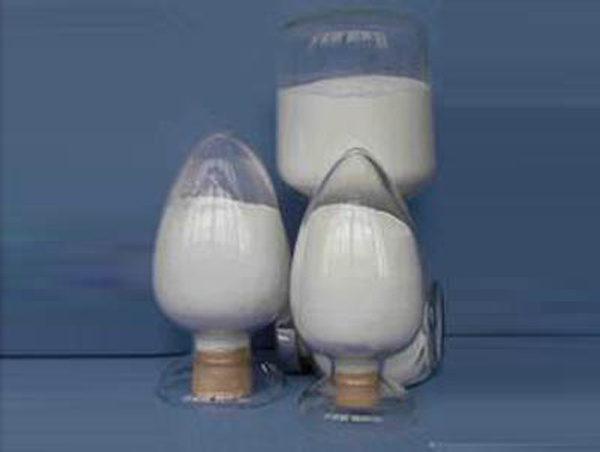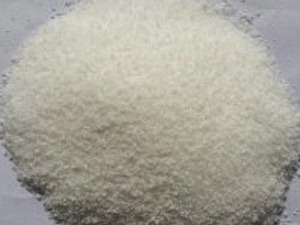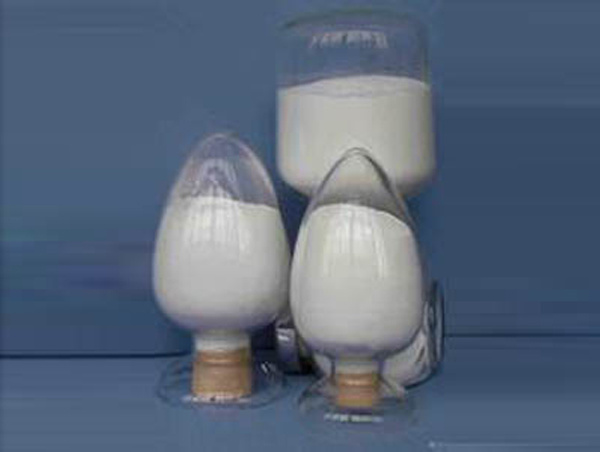Solution
No data
氨基丁酸
Classification:
Description
德州金茂化工有限公司是一家酸性染料、皮革染料、饲料添加剂、氨基丁酸、添加剂、染色、消毒液、消毒制品厂家。酸性染料、皮革染料产品主要用于皮革、羊毛、呢绒、丝绸和造纸行业。氨基丁酸产品主要用于猪、家禽、牛、鱼虾等饲料添加剂。金茂化工引进国际同行业先进生产工艺和检测设备,致力于酸性染料、皮革染料、弱酸染料、中性染料和直接染料的研制、开发和生产。各类染料八十余个品种,色谱齐全。金茂化工结合自身优势积极开发氨基丁酸、二氢吡啶等饲料添加剂,带动产品走出了一条以环保为先,技术为支撑的品牌化创新发展之路。公司的决策以长期理念为基础,建立规范化的作业流程,推行工作标准化和制度化。

|
有效物质含量:99(%) |
型号:nwsw-03 |
分类:氨基酸 |
|
品牌:能为生物 |
主要用途:抗应激促生长 |
产品规格:25公斤 |
【别名】
4—氨基丁酸,氨酪酸,哌啶酸,GABA
【理化性质】
白色或类白色结晶性粉末:略有臭味,微苦;易溶于水;含量≥99%
【产品说明】
γ—氨基丁酸(GABA)又名氨酪酸,属于氨基酸类衍生物。它是一种在动物体内起神经镇定作用的非蛋白质氨基酸,在动物体内主要由谷氨酸经过脱羧反应而来。GABA是一种中枢神经镇静剂,研究表明其具有安定、抗惊厥、降血压、增进脑活力、营养神经细胞、促进生长激素分泌以及保肝利肾等作用。γ—氨基丁酸作为一种新型饲料添加剂,对畜禽具有抗热应激、促生长、提高生产性能等作用,效果显著,安全性高等特点。
【产品功效】
1.抗应激:γ—氨基丁酸属强神经抑制性氨基酸,具有镇静、催眠、抗惊厥、降血压的生理作用,是抑制性神经递质。有效防治畜禽烦躁不安、咬尾、打斗、啄羽、啄肛等应激综合症。
2.促生长:促进生长激素的分泌,促进生长。
3.提高采食量:增强食欲,加快饲料养分消化、吸收,消除畜禽挑食、厌食,提高日增重。
4.改善动物血液循环功能,提高畜禽免疫力和抗病力,使畜禽对生活环境产生更好的抵抗力。
【适用范围】
适用于不同生长期的猪、家禽、牛、鱼虾等饲养类动物
【添加方法】
建议添加量
|
添加对象 |
乳仔猪 |
中猪 |
大猪 |
家禽 |
|
原料添加量 |
30-50ppm |
25-30ppm |
15-20ppm |
10-15ppm |
【储存】
产品易吸潮、结块,请密封保存,阴凉干燥处保存。
【包装】
包装规格25公斤/桶;纸桶内衬双层塑料袋,密封保存,也可按客户要求包装。
【保质期】
储存:遮光、密封、在暗处保存。
有效期:24个
4-氨基丁酸 (γ—氨基丁酸)
4-氨基丁酸简称GABA,性状是片状或针状结晶。广泛分布在动植物体中。植物如豆属、参属、中草药等的种子、根茎和组织液中都含有4-氨基丁酸;在动物体内,4-氨基丁酸几乎只存在于神经组织中,其中脑组织中的含量大约为0.1-0.6mg/克组织,免疫学研究表明其浓度最高的区域为大脑中黑质。
来源
作为一种化学物质来说,早在 1883 年 GABA 就被人工合成。1950 年有人发现哺乳动物正常脑内的 GABA 的浓度很高,但生理意义不明。随后,有人从牛脑中提取出一种能抑制螯虾牵张感受器神经元产生冲动提取液,发现其具有抗乙酰胆碱及对豚鼠和家兔的回肠有收缩作用,并证明此提取液中起抑制作用的组分就是 GABA。Segal SA 等又证实 GABA 对哺乳动物的中枢神经具有普遍抑制作用,将用离子电泳分离得到的 GABA 注射于猫皮层十字沟周围的神经元,可引起神经元的超极化,其电位与刺激皮层表面突触所产生的抑制性电位相同,并发现用电刺激猫的小脑浦氏细胞时第四脑室灌流液中的 GABA 含量增加 3 倍,因而推测浦氏神经元释放的化学递质是 GABA。
理化性质
小叶状结晶(甲醇-乙醚)、针状结晶(水-乙醇),熔点202℃(在快速加热下分解)。在25℃时解离常数Ka3.7×10-11, Kb1.7×10-10。易溶于水,微溶于热乙醇,不溶于其他有机溶剂。在熔点温度以上分解形成吡咯烷酮和水。外观:白色结晶或结晶性粉末。
白色片状或针状结晶;微臭,具有潮解性;极易溶于水,微溶于热乙醇,不溶于冷乙醇、乙醚和苯;分解点为202℃;LD50(大鼠,腹腔) 5400mg/kg。
用途
伽马氨基丁酸是中枢神经系统中很重要的抑制性神经递质,它是一种天然存在的非蛋白组成氨基酸,具有极其重要的生理功能,它能促进脑的活化性,健脑益智,抗癫痫,促进睡眠,美容润肤,延缓脑衰老机能,能补充人体抑制性神经递质,具有良好的降血压功效。促进肾机能改善和保护作用。抑制脂肪肝及肥胖症,活化肝功能。每日补充微量的伽玛氨基丁酸有利于心脑血压的缓解,又能促进人体内氨基酸代谢的平衡,调节免疫功能。
γ-氨基丁酸属强神经抑制性氨基酸,具有镇静、催眠、抗惊厥、降血压的生理作用。它是抑制性神经递质(Inhibitory Neurotransmitter),可以抑制动物的活动,减少能量的消耗。氨基丁酸作用于动物细胞中的GABA受体,GABA受体是一个氯离子通道,GABA的抑制性或兴奋性是依赖于细胞膜内外的氯离子浓度的,GABA受体被激活后,导致氯离子通道开放,能增加细胞膜对氯离子通透性,使氯离子流入神经细胞内,引起细胞膜超极化,抑制神经细胞元激动,从而减少动物的运动量。
它是通过减少动物的无意识运动,来减少能量消耗,从而达到促生长的目的。γ-氨基丁酸能促进动物胃液和生长激素的分泌,从而提高生长速度和采食量;能兴奋动物的采食中枢,从而增加采食量。
是一种神经抑制的产品.
GABA的生理作用
根据目前的研究,发现GABA的生理活性主要表现在以下几方面:
(1)镇静神经、抗焦虑。医学家已经证明GABA是中枢神经系统的抑制性传递物质,是脑组织中最重要的神经递质之一。其作用是降低神经元活性,防止神经细胞过热,GABA能结合抗焦虑的脑受体并使之激活,然后与另外一些物质协同作用,阻止与焦虑相关的信息抵达脑指示中枢。
(2)降低血压。GABA能作用于脊髓的血管运动中枢,有效促进血管扩张,达到降低血压的目的。据报道,黄芪等中药的有效降压成分即为GABA。
(3)治疗疾病。1997年,大熊诚太郎的研究表明GABA与某些疾病的形成有关,帕金森病人脊髓中GABA的浓度较低,癫痫病患者脊髓液中的GABA浓度也低于正常水平。日本大阪大学医学院的研究显示GABA对Kupperman综合症具有显著的改善效果。另外,神经组织中GABA的降低也与Huntington疾病、老年痴呆等神经衰败症的形成有关。
(4)降低血氨。我国的临床医学和日本的研究者也都认为,GABA能抑制谷氨酸的脱羧反应,使血氨降低。更多的谷氨酸与氨结合生成尿素排出体外,以解除氨毒,从而增进肝机能。摄入GABA可以提高葡萄糖磷酸酯酶的活性,使脑细胞活动旺盛,可促进脑组织的新陈代谢和恢复脑细胞功能,改善神经机能。
(5)提高脑活力。GABA能进入脑内三羧酸循环,促进脑细胞代谢,同时还能提高葡萄糖代谢时葡萄糖磷酸酯酶的活性,增加乙酰胆碱的生成,扩张血管增加血流量,并降低血氨,促进大脑的新陈代谢,恢复脑细胞功能。
(6)促进乙醇代谢。以嗜酒者为对象,服用GABA再饮用60ml威士忌后采血测定血中乙醇及乙醛浓度,发现后者浓度明显比对照组低。
(7)其他。最新的研究表明,GABA还具有防止皮肤老化、消除体臭、改善脂质代谢,防止动脉硬化高效减肥等功能。
制备方法
1、合成法由吡咯烷酮开环制得。将生石灰用蒸馏水消化成石灰乳,抽入水解反应釜,加吡咯烷酮,升温至125-130℃,反应压力保持在0.29MPa,保温反应10-14h以上。反应结束后降温至30℃出料过滤,用蒸馏水洗涤。滤液加碳酸氢铵,直至无钙离子检出,再加活性炭在80℃保温脱色30min,60℃过滤,用蒸馏水洗,洗液与滤液合并,在60℃减压浓缩至析出结晶,加入乙醇,冷却、过滤、干燥,得成品,收率为85%以上。
2、发酵法 使用大肠杆菌作为菌种。发酵培养基为麸皮水解液、玉米浆、蛋白胨、硫酸镁和氯化钠等。以豆油为消沫剂,用量约为0.1%,发酵单位约为100酶单位/ml发酵液。在提炼过程中,利用大肠杆菌脱羧酶的作用,将L-谷氨酸转化为γ-氨酪酸在水溶液中能解离成阳离子的特性,采用强酸性苯乙烯系阳离子交换树脂进行离子交换,氨水洗脱,提取,再经树脂纯化,浓缩、结晶、干燥后即得成品。
Key words:
Previous article:
The next one:
Online consultation
If you have any questions about engineering, please contact us immediately, we will arrange professionals to reply to you as soon as possible.







